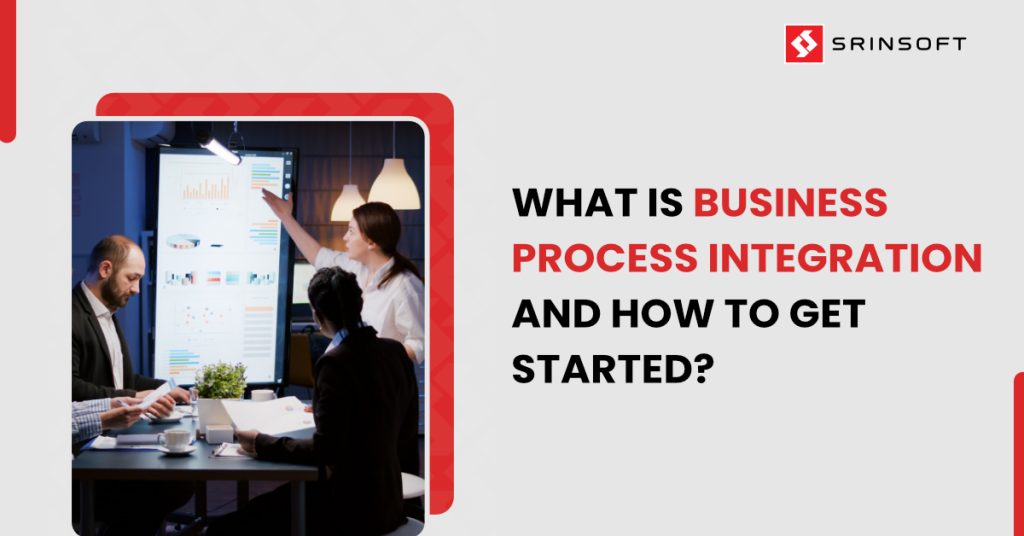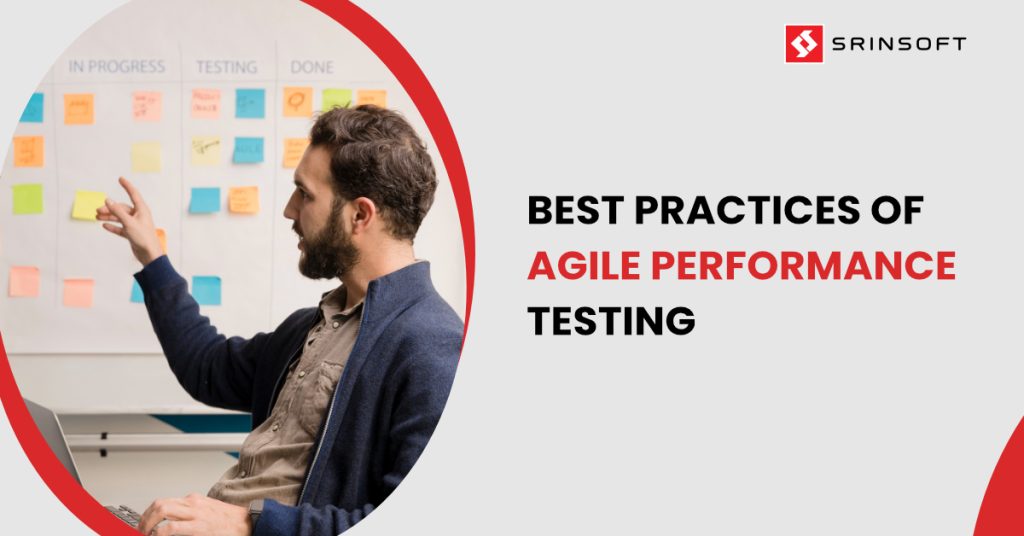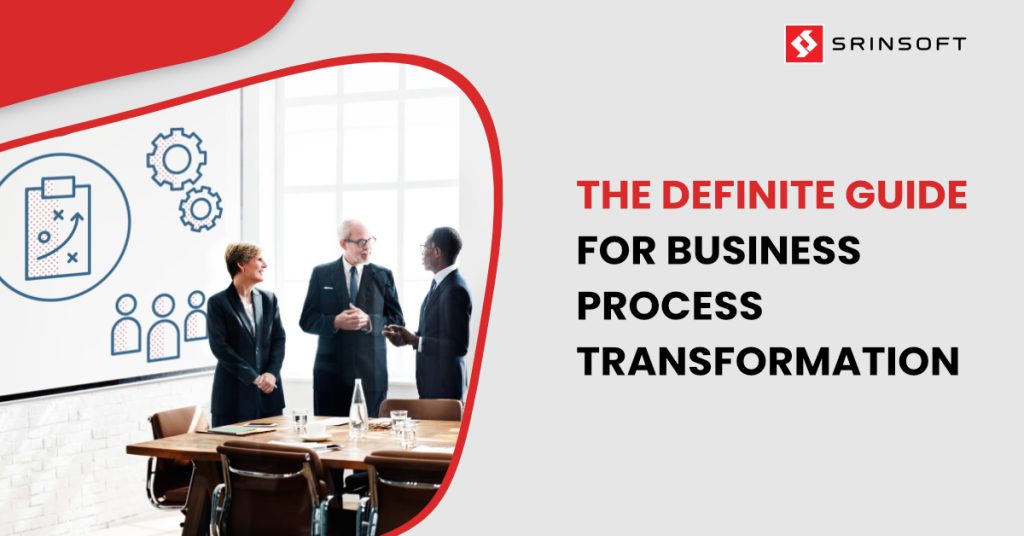
Think of your company as a complicated machine with each department (marketing, sales, or customer service) working like gears slotting into place to fulfill its role.
Well, what if these gears stop interacting with each other properly? This can happen when processes are disjoint and lack coordination. As a result, information is trapped, tasks take longer, and the machine can’t operate at peak efficiency.
Process Integration is essential to prevent these issues. By ensuring processes are aligned and coordinated, information flows smoothly, tasks are completed efficiently, and the overall machine operates at its best.
This is a common problem for organizations driven by disconnected systems, and disjointed processes. Additionally, the various other departments within the enterprise also begin operating in silos with no interconnectedness, propagating data inconsistencies and weak operational performance. This is where Business Process Integration (BPI) steps in. BPI acts like a lubricant for your business machine. It’s about connecting various aspects of a company’s operations to improve efficiency, collaboration, and flow of information. This can involve people, data, and applications working together seamlessly. For instance, integrating your customer relationship management (CRM) system with your marketing automation platform can streamline the process of nurturing leads.
So, why are organizations increasingly implementing BPI? The answer is simple: benefits. BPI can significantly improve efficiency, reduce costs, and even enhance customer satisfaction. By integrating business processes organizations can synchronize data in real-time, streamline workflows, and improve collaboration across departments. BPI paves the way for long-term benefits that ripple throughout the organization.
In this article, we will explore the concept of business process integration, its importance, and the steps involved in implementing BPI.
What is Business Process Integration?
Business Process Integration (BPI) is a way for companies to make their work smoother by connecting different parts like people, data, technology, and tasks. BPI aims to make things more efficient, improve communication, and help teams work better together, both inside the company and with others outside like partners or customers.
BPI is all about breaking down barriers between departments and making sure everyone is on the same page. As businesses get bigger, they use more technologies and systems, which can make things complicated. BPI helps manage this complexity by making sure information moves easily between systems, which in turn helps make decisions with reliable information and is also useful in automating tasks.
One big part of BPI is connecting different technology systems and how work gets done, which lets information flow quickly and accurately. This is useful for tasks like managing how products get made and delivered, keeping track of customers, and managing a company’s resources. When these systems are connected, businesses can get better insights from their data, see trends faster, and work more efficiently.
BPI also helps in enhancing data security and integrity. By centralizing data access and ensuring that all stakeholders have access to the same data, BPI reduces errors and makes it easier to keep information secure. Also, by automating tasks and making work more efficient, BPI can help businesses save money.
Different Types of BPI
We know that the end goal of BPI is to bring together various processes and systems within an organization. However, an organization in itself will have a multitude of interconnected operational aspects that give rise to various types of integration. Let us explore these different kinds of BPI.
API Integration
API Integration connects different software applications so they can share data and functions. It is useful when a company is looking to introduce a new application or add new features without needing to build them from scratch. An instance of API integration is an online store leveraging an API to connect its website to a payment system, making transactions easy and smooth.
Native Integrations
Native Integrations are nothing but built-in connections between software applications that allow them to work together easily without requiring any additional programming. This type of integration is simple to set up and use, usually just needing approval from an administrator. An example of such a BPI is accounting software that works directly with spreadsheet programs to handle financial data without extra programming.
Third-Party Integration
This type of business process integration involves using software from external software vendors to add new features to the current systems. It saves money and time because businesses won’t have to build these features by themselves from scratch. However, third-party integration might have issues compatibility issues with existing systems or concerns about data privacy. A classic use case of third-party integration would be a company using third-party software to improve its invoice tracking in its current accounting system.
Data Integration in Business Process Integration
Data integration is the process of combining data from different places into one complete view. This method of integration helps improve the quality and consistency of data, which in turn helps make better business decisions possible. By merging data from different departments, businesses get a full picture and can create strategies based on this comprehensive information.
Application Integration
Application Integration links different software applications across departments to ensure they can share data and functionalities seamlessly. This streamlines operations and boosts productivity by enabling smooth communication between applications. A practical instance for this would integrate employee management software with payroll systems to automate tasks like attendance tracking and salary processing to reduce manual effort.
Point-to-Point Integration
This method of integration connects specific systems or endpoints directly using customized code which in turn allows for precise data exchange. This type of integration provides efficient and direct communication between systems without the need for intermediaries. However, the limitation with such this type of integration is that as the number of connections grows, managing and updating each point becomes increasingly complex.

UI Integration in Business Process Integration
UI integration binds together different interfaces to streamline navigation between applications at the user interface level. This minimizes the need for users to jump back and forth between one or more platforms, which can help improve productivity and reduce errors. UI integration allows for seamless navigation between different applications and improves interaction at the user interface level. An instance of UI integration is integrating email, calendar, sales, and support tools into one CRM interface or even combining modules for finance, HR, inventory, and procurement into a single ERP dashboard.
Benefits of Business Process Integration
BPI acts as a bridge and biding force between various elements of an organization that ultimately leads to several advantages. Let’s explore the several benefits that businesses can have by integrating processes.
Improved Operational Efficiency
BPI connects business processes, people, and data, streamlining services and reducing redundancies. This leads to better resource use, saving time and costs, and allowing employees to focus on high-value tasks.
Reduced Errors
Integrating systems allows data to flow automatically between them, reducing human errors from manual data entry and improving accuracy and consistency.
Improved Visibility
BPI provides a real-time view of operations by connecting systems and data sources, allowing for better monitoring of workflows and identifying issues quickly.
Elimination of Data Silos
BPI breaks down data silos, enabling all departments to access and analyze the same data. This improves decision-making and collaboration across the company.
Better Communication and Collaboration
By integrating systems, BPI makes it easier for employees to share information and work together, ensuring everyone is aligned with project goals.
Scalability and Flexibility
BPI allows business processes to adapt to growth, mergers, or downsizing without disrupting operations, ensuring flexibility in managing changes.
Cost Savings
BPI reduces the need for extensive IT support and multiple software licenses, leading to cost savings. It also eliminates inefficiencies, further reducing operational costs.
Better Decision-Making
BPI provides real-time access to consolidated data, giving decision-makers a complete view of performance for better strategic planning and operational decisions.
Improved Compliance
BPI automates processes to ensure adherence to industry regulations and standards, reducing the risk of non-compliance due to human error.
Increased Agility
Integrated systems enable businesses to quickly adapt to market changes, launch new products, or modify services without extensive manual adjustments.
How to Get Started with BPI
Business Process Integration (BPI) can be a complex process but breaking it down into specific steps can make it more manageable and effective. Here’s a consolidated guide based on getting started with BPI.
Define Your Goals
First, determine what you want to achieve with business process integration (BPI). Having clear goals will help you prioritize your integration efforts and focus on the most impactful processes first.
Identify Processes
Identify any processes that may be suitable for integration. This may require using business mapping tools that can help you not only document and catalog the current processes but also guide you in identifying processes that need to be integrated. This step is useful to realize what will occur by integrating some processes. Business Mapping Software is used to visualize your existing processes, identify gaps, and recognize opportunities for improvements.
Document and Map Processes
The next step is to record how current business practices work and create a detailed record of each process and how they interact with each other. This helps understand if they align with business goals. Additionally, create visual representations of these processes using tools like flowcharts or diagrams. These visuals make it easier for stakeholders to see how things work and spot areas that need improvement. Compare these documented processes with the organization’s goals. This is particularly useful to determine how well the current practices support these goals and identify areas where changes are needed.
Identify Integration Points
Next, analyze your existing processes to find areas where data or tasks need to be shared between departments or applications. These are your potential integration points. Look for places where manual steps are causing delays or inconsistencies. Repetitive tasks that involve moving data between systems are prime candidates for automation.
Model Process Integration
Before implementing any integration, use software to create several models. This allows you to simulate different integration strategies and forecast potential outcomes without substantial investment or long training. Use these models to discuss proposed changes with stakeholders. This ensures everyone understands the changes and their expected benefits, leading to better-informed decisions.
Design, Implement, and Monitor
Based on the models and forecasts, design an integration plan that aligns with business goals. Execute the integration plan, ensuring that all stakeholders are aware of the changes and their roles in the new integrated processes. Continuously monitor the integrated processes to assess their effectiveness and make adjustments as needed. Implement regular review cycles to track progress toward goals and identify further optimization opportunities.
Choose the Right Tools
There are various tools available for BPI, each with its strengths and weaknesses. Select the tools that best fit your needs based on your defined goals and identified integration points.
Conclusion
Business Process Integration isn’t just about technology; it’s about building a stronger foundation for your business. By connecting different processes, data, and people, BPI creates a more streamlined and efficient way of working. When an organization invests in BPI, it brings long-term advantages. However, it is not a one-time event. It’s an ongoing process of optimizing workflows and breaking down information barriers within a business. BPI is a continuous improvement process that helps your organization adapt and thrive. So, take the first step towards a stronger foundation and start your BPI journey today.
FAQs
What are the Challenges of Implementing Business Process Integration?
Some of the challenges to implementing BPI include but are not limited to Poor Documentation, Changing Needs, Technical Limitations, and Incorrect Existing Processes.
What are the tools used for Business Process Integration?
There are various tools, including integration platforms, middleware, APIs, and enterprise service buses (ESBs), each suited for different integration needs.
How long does it take to implement BPI?
The time required to implement BPI varies depending on the complexity of the processes and systems involved, ranging from a few months to over a year.
Why is process integration difficult to achieve?
Process integration is difficult because it requires aligning various departments, systems, and data formats, which often involves overcoming technical, organizational, and cultural barriers.


